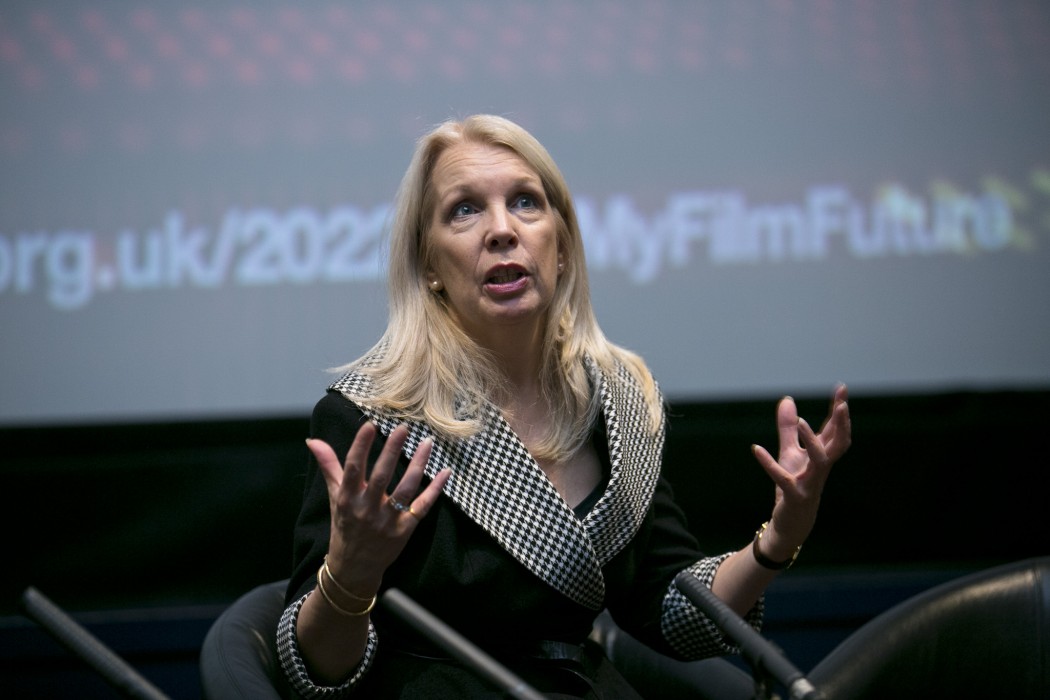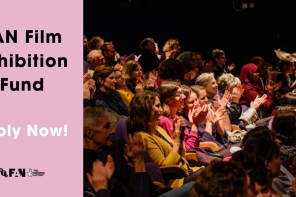Bringing two days of panels, presentations and discussions at This Way Up to a close, Amanda Nevill from the BFI took questions from the audience about the next phase of film production and exhibition in the UK: BFI 2022.
While most hadn’t had time to read the full strategy outline during the conference there were a number of obvious changes in direction that a first glance raised.
For Nevill, the strategy is “very, very optimistic”, building on the foundations of Film Forever. The next phase will see development in three key focus areas:
- Future Audiences and Culture
- Future Education and Skills
- Future Filmmaking
What the ‘future’ means is varied; where audiences and culture are concerned BFI’s Film Audience Network (FAN) will be taking the lead and assuming responsibility for a more significant portion of the funds and decisions. The FAN board will be responsible for ensuring that more well funded initiatives are taking place UK-wide, and not just in London. There have been, it seems, a number of regional and rural projects that have affected positive change but also many more than have yet to get off the ground.
Where Film Forever had a dedicated Neighbourhood Cinema Fund – a small capital fund that enabled neighbourhood cinemas to upgrade equipment and basic operations as well as have access to bursaries to attend relevant training and events – the new strategy sees an overarching Audience Fund that aims to be more flexible in supporting distributors, exhibitors, festivals, national and touring programmes, multi-year projects, strategic partners and community cinemas. While one audience member raised the concern that the word “community” was missing in the current online strategy, Nevill assured the audience that it should definitely be in the report.
So far as education is concerned, Into Film will continue to play a major role and, most significantly, they’re going to put the focus back on education in schools. This means a commitment to subjects beyond STEM and with teachers leading the programmes to ensure that young audiences are understanding and accessing cinema as a social, historical, political, cultural and aesthetic art form.
Finally, for filmmaking, the major shift is in the BFI’s understanding of the relationship between format and audience. If we know that audiences are watching films across a number of different platforms, looking at cinema as something you can experience in and outside of the traditional auditorium, then shouldn’t we be allowing artists who make work for different viewing platforms to apply for support, too?
What this means is that the BFI will now fund films for any platform – not just theatrical exhibition. For enthusiasts of VR and, certainly after an entire weekend devoted to discussing spaces, experience and theatrical abundance, this not only makes sense but is a welcome change in policy.
While the room seemed to be mostly positive about the changes there was some concern around changes to the geographical parameters of the UK’s regional hubs, which will result in reducing the number of hubs from 6 to 5 in England. Nevill assured the room that the changes were to ensure geographical ease rather than to reduce support for regional cinema initiatives.
But perhaps the most significant thing of all is that everyone – across the entire country – cited diversity as the biggest problem in the survey and, looking around the room, this is visibly evident. And so, what I think we can look forward to most is positive change in visible diversity onscreen, in the classroom, in cinemas and next year when we amass in Hull for This Way Up 2017.
Written by Tara Judah for The Bigger Picture. Keep up with everything from This Way Up on Twitter with @thiswayupcon @bigger_pict #ThisWayUp16 #biggerpicture
Photograph courtesy of Eoin Carey.





